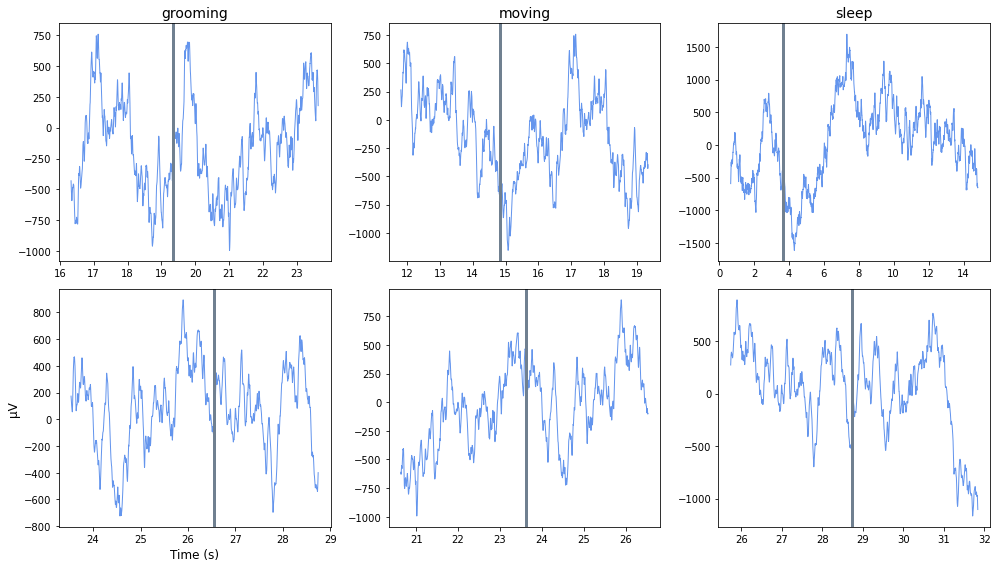Note Filter Example
Import streaming EEG data into Python using read_block
Filter around behavioral events that were timestamped by the user using the Run-time Notes feature in Synapse, using epoc_filter
Plot each occurrence in a subplot organized by Note type
Good for sleep scoring and behavioral discrimination
Housekeeping
Import the tdt package and other python packages we care about
# magic for Jupyter
%matplotlib inline
import matplotlib.pyplot as plt # standard Python plotting library
import numpy as np
import tdt
Importing the Data
This example uses our example data sets. To import your own data, replace BLOCK_PATH with the full path to your own data block.
In Synapse, you can find the block path in the database. Go to Menu → History. Find your block, then Right-Click → Copy path to clipboard.
tdt.download_demo_data()
BLOCK_PATH = 'data/Subject1-180426-120951'
demo data ready
Set up the variables for the data you want to extract.
We will extract channel 1 from the EEG1 stream data store.
STORE = 'EEG1'
CHANNEL = 1
ONSET = [-3] # relative onset, in seconds, from the note timestamp
Now read the specified data from our block into a Python structure
data = tdt.read_block(BLOCK_PATH, channel=CHANNEL)
Found Synapse note file: data/Subject1-180426-120951\Notes.txt
read from t=0s to t=31.81s
All user notes are stored in a special epoc event called 'Note'
# find all the unique note values
notes, counts = np.unique(data.epocs.Note.notes, return_counts=True)
# find the highest number of occurrences (to inform our plot)
maxOccur = np.max(counts)
Loop through the notes for plotting
# some useful variables
num_notes = len(notes)
fs = data.streams[STORE].fs
fig = plt.figure(figsize=(14, 8))
for ind, note in enumerate(notes,1):
print('Reading note:', note)
# look at only the data around this note type
filtered = tdt.epoc_filter(data, 'Note', values=note, t=ONSET)
# for each note occurrence, plot the data from
# the note onset to the next note onset
n = len(filtered.streams[STORE].filtered)
for j in range(n):
plotInd = j * num_notes + ind
ax = fig.add_subplot(maxOccur, num_notes, plotInd)
# x-axis is the valid time ranges, in seconds
len_wav = len(filtered.streams[STORE].filtered[j])
ts = filtered.time_ranges[0,j] + np.linspace(1, len_wav, len_wav) / fs
# plot the snippet, in microvolts
y = np.transpose(1e6 * filtered.streams[STORE].filtered[j])
trace1 = ax.plot(ts, y, lw=1, color='cornflowerblue')
# if we specified an ONSET, draw the vertical line at the note onset
if ONSET != 0:
trace2 = ax.axvline(x = (ts[0]-ONSET),
color='slategray',
linewidth=3)
# plot labels
if j == 0:
ax.set_title(note,fontsize=14)
elif j == (n-1):
if ind == 1:
ax.set_ylabel('\u03BCV',fontsize=12)
ax.set_xlabel('Time (s)',fontsize=12)
fig.tight_layout()
Reading note: grooming
Reading note: moving
Reading note: sleep
